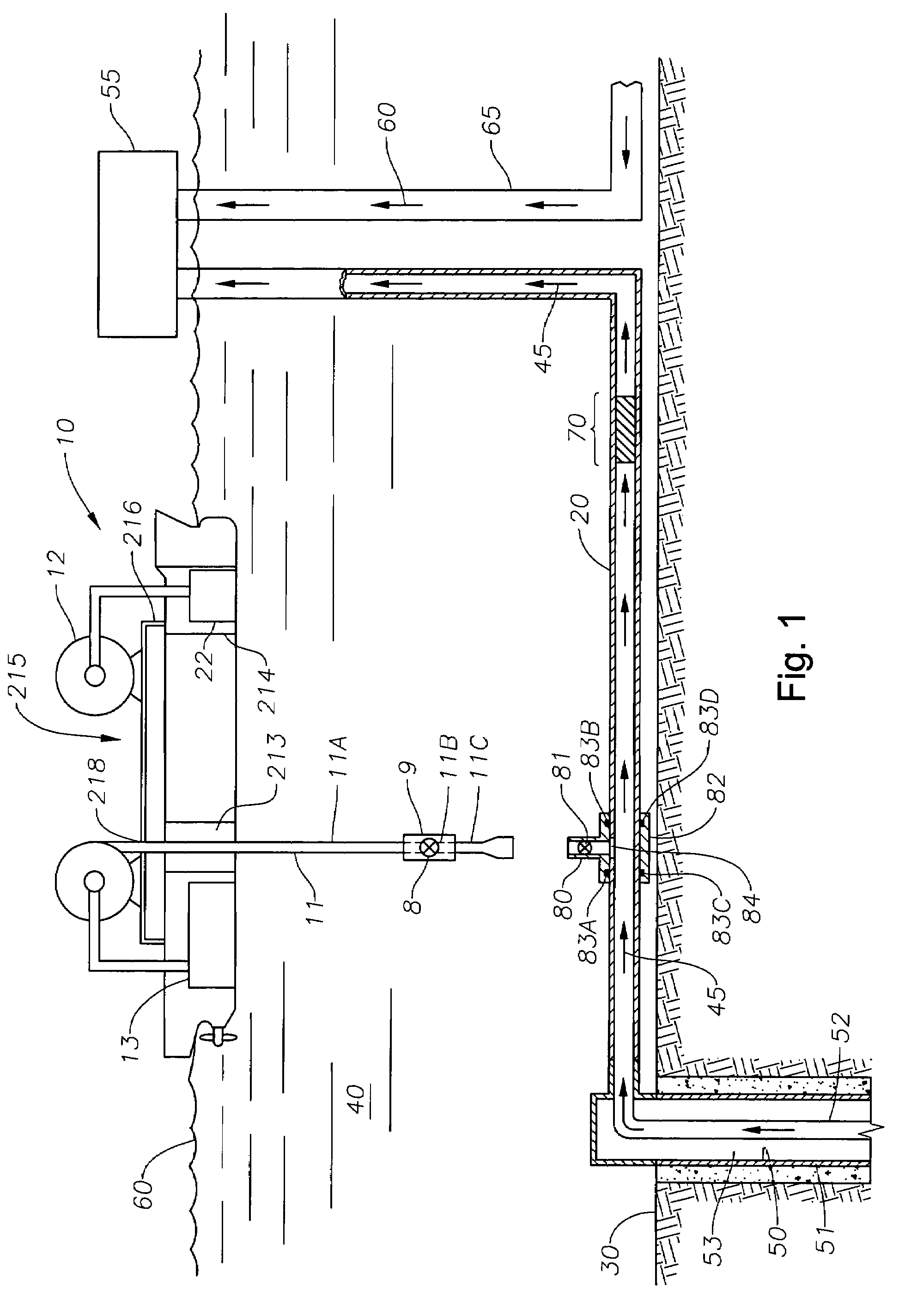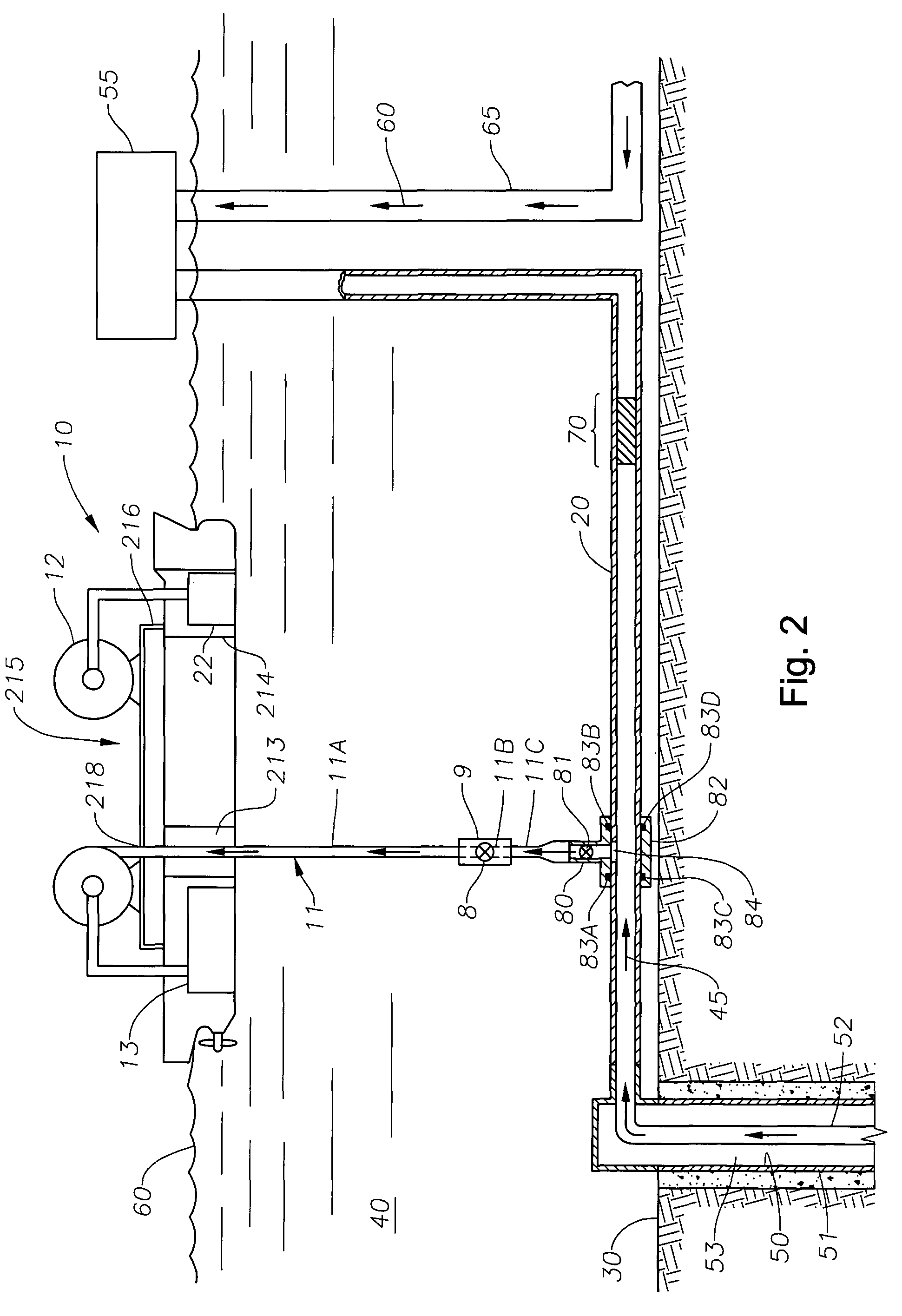Vessel for well intervention
a well and wellbore technology, applied in special purpose vessels, passenger handling devices, borehole/well accessories, etc., can solve the problems of increasing the cost of operation, and increasing so as to increase the profitability of the wellbore.
- Summary
- Abstract
- Description
- Claims
- Application Information
AI Technical Summary
Benefits of technology
Problems solved by technology
Method used
Image
Examples
Embodiment Construction
[0039]FIG. 8 illustrates a vessel 10 embodying the present invention. FIG. 8 is based on a drawing extracted from “First Olsen Tankers” and shows a shuttle tanker of the type widely used in the North Sea. In the vessel 10, the only modification made to the standard shuttle tanker is the mounting of a superstructure 107 above the main deck (not shown) of the vessel 10, for example at a height of approximately 3 meters so as to exist above the installed deck pipes and vents (not shown). A standard North Sea specified shuttle tanker with dynamic positioning can be readily charted and fitted with a new deck above the installed deck pipes and vents, upon which deck can be installed, for example, the following equipment: a skid mounted derrick riser handling unit with subsea control panel; stumps for the subsea well intervention equipment; a pipe rack; coiled tubing reels, a control unit, and a power pack; a cementing unit and blender, production test equipment including a choke manifold,...
PUM
 Login to View More
Login to View More Abstract
Description
Claims
Application Information
 Login to View More
Login to View More - R&D
- Intellectual Property
- Life Sciences
- Materials
- Tech Scout
- Unparalleled Data Quality
- Higher Quality Content
- 60% Fewer Hallucinations
Browse by: Latest US Patents, China's latest patents, Technical Efficacy Thesaurus, Application Domain, Technology Topic, Popular Technical Reports.
© 2025 PatSnap. All rights reserved.Legal|Privacy policy|Modern Slavery Act Transparency Statement|Sitemap|About US| Contact US: help@patsnap.com



